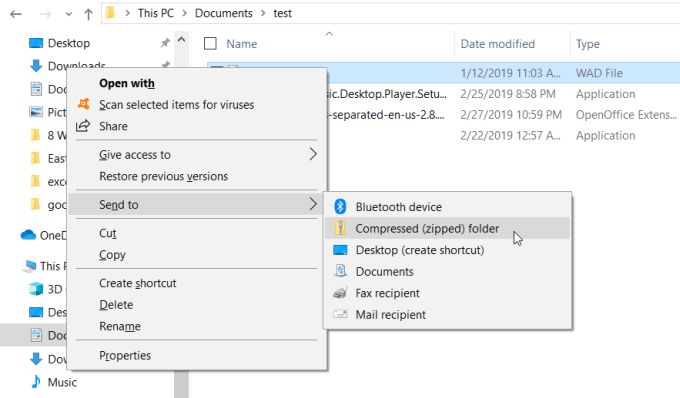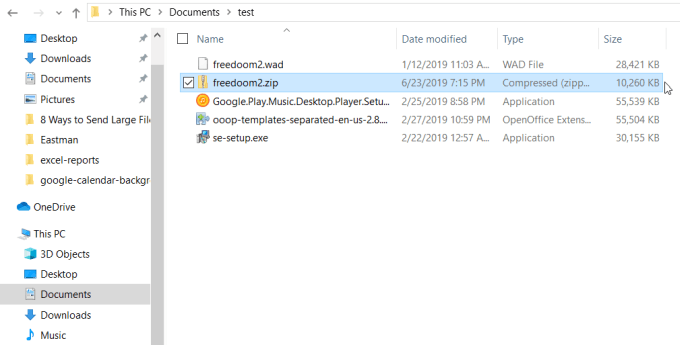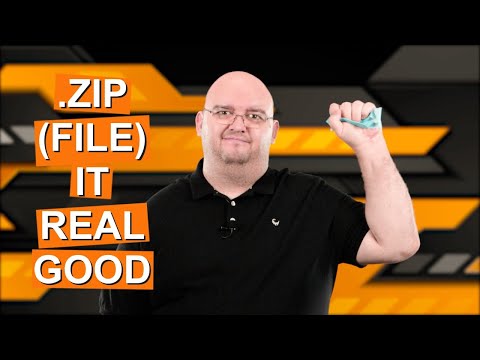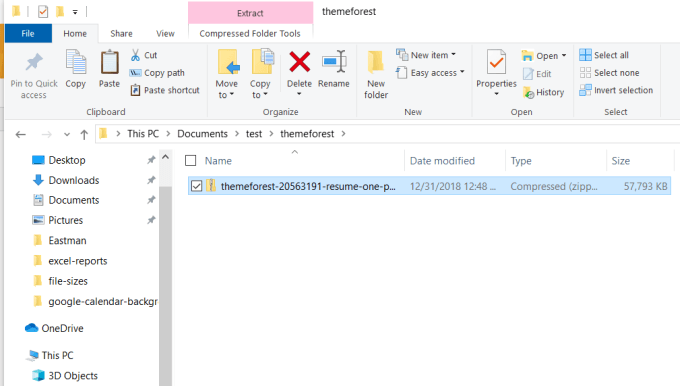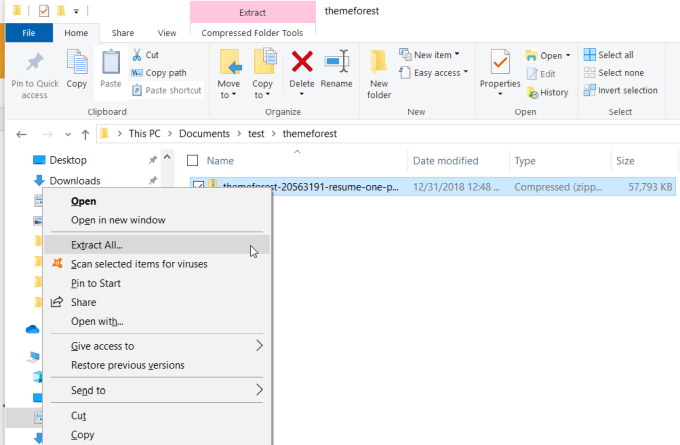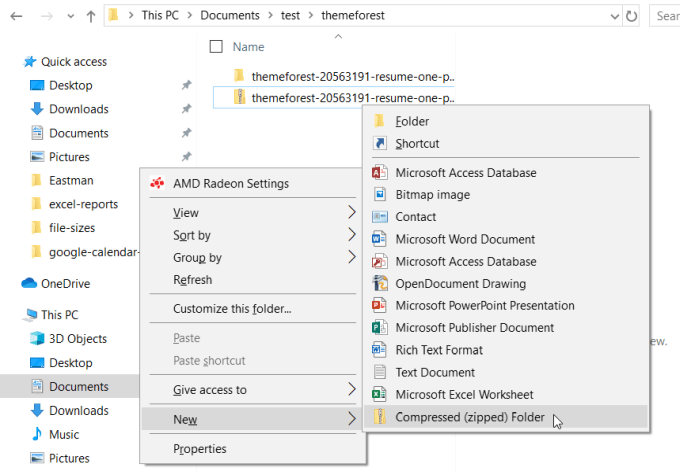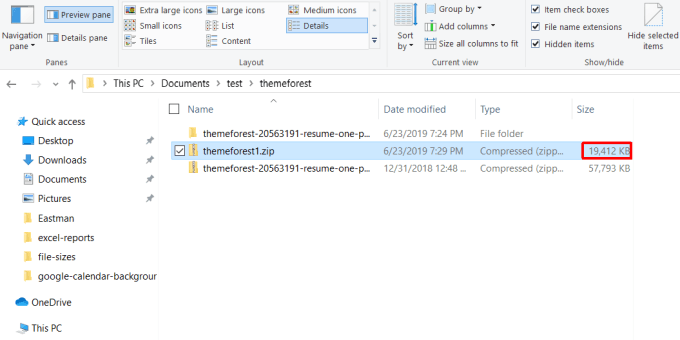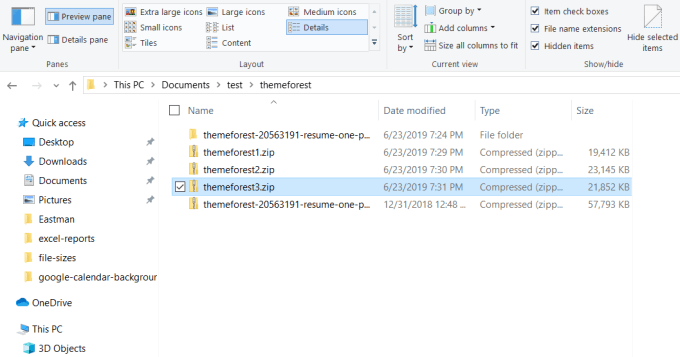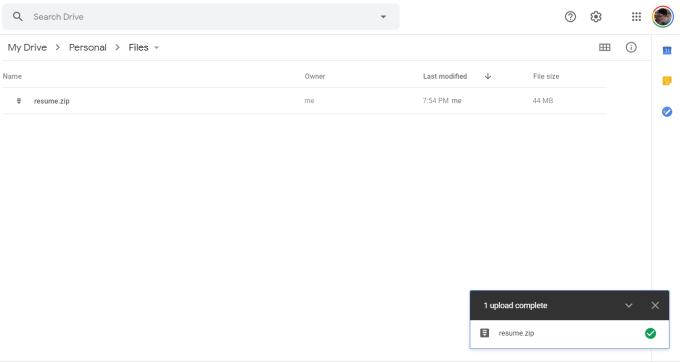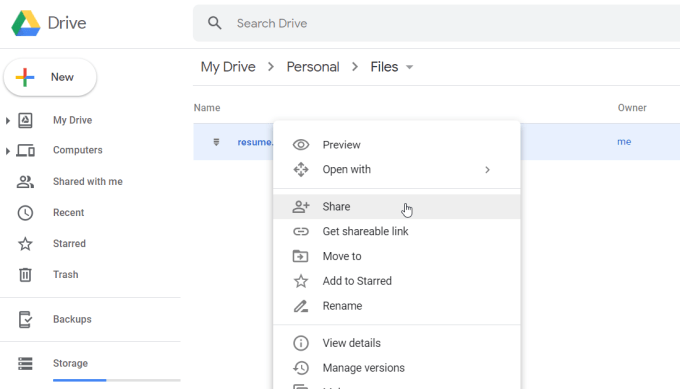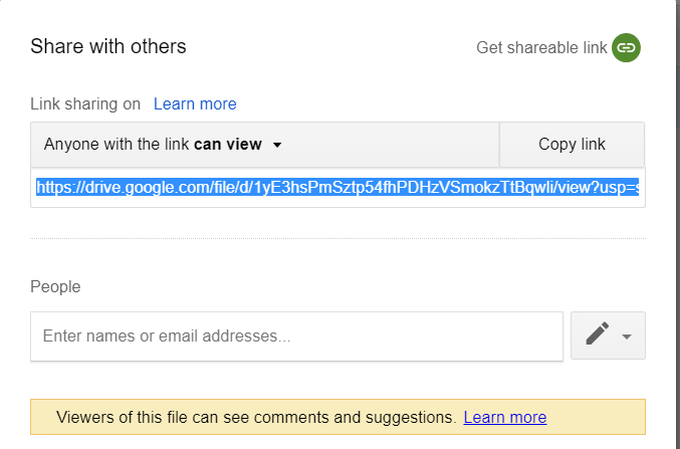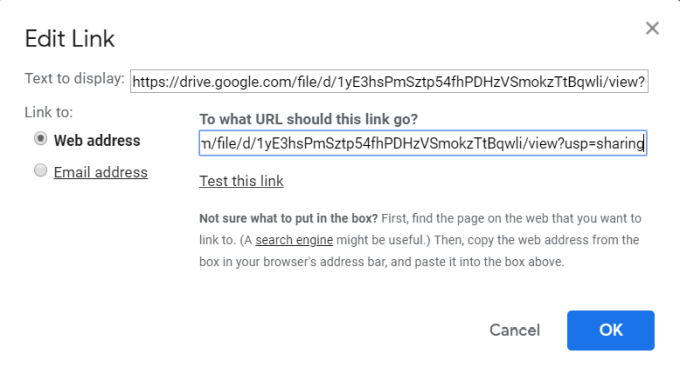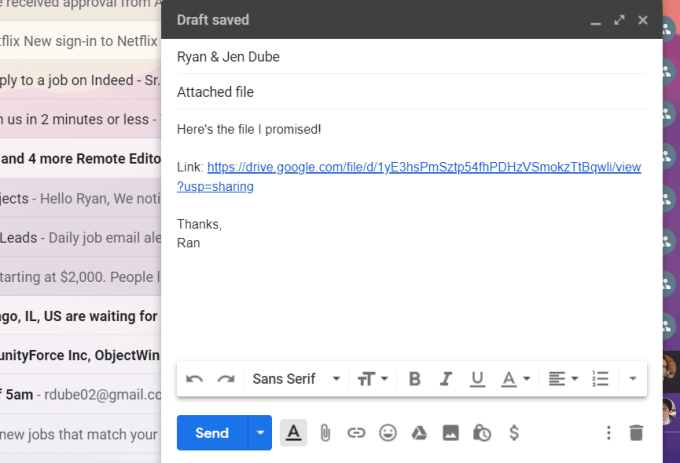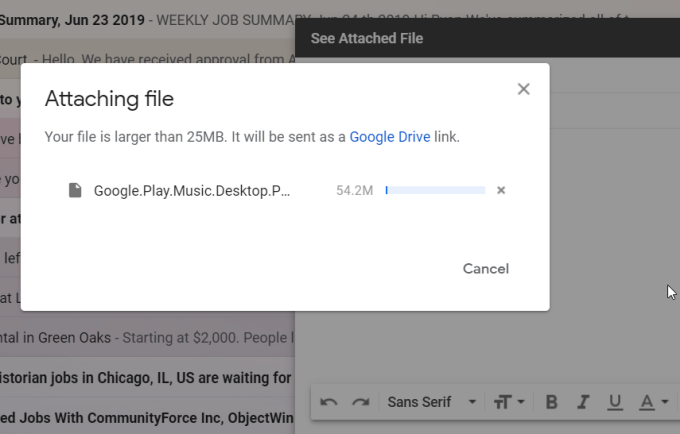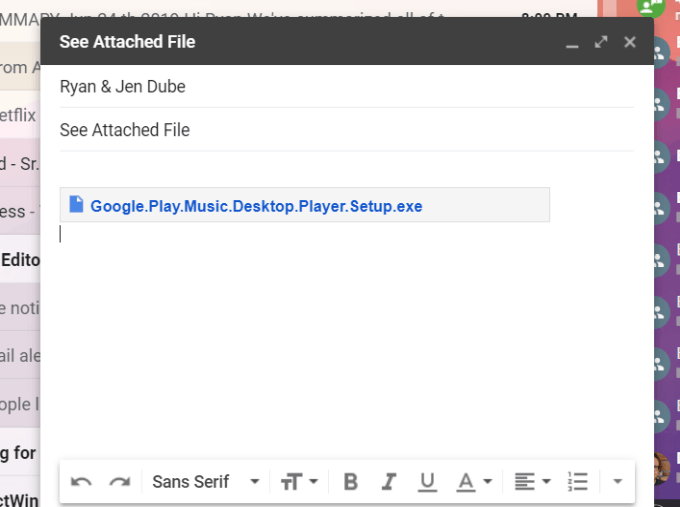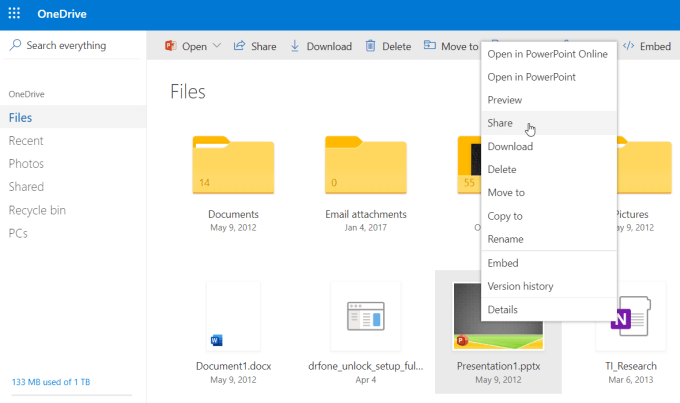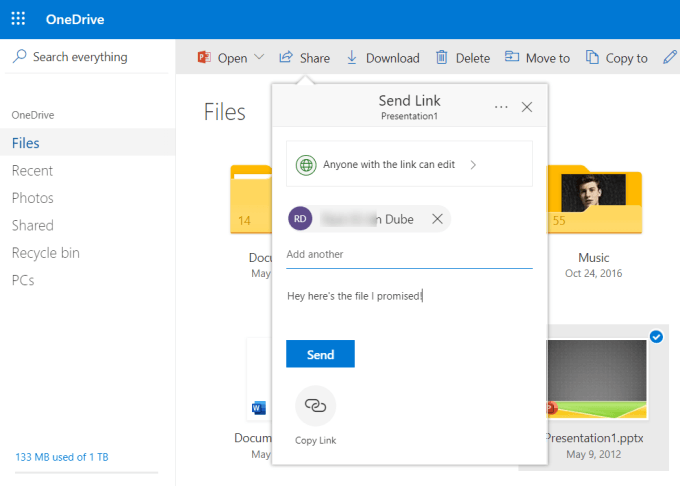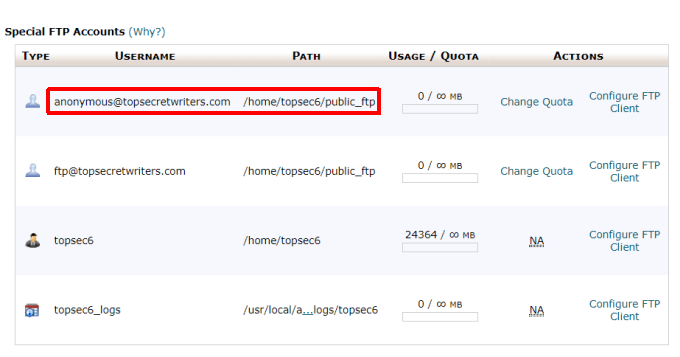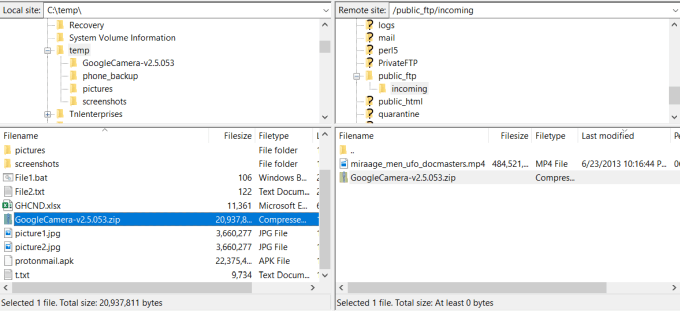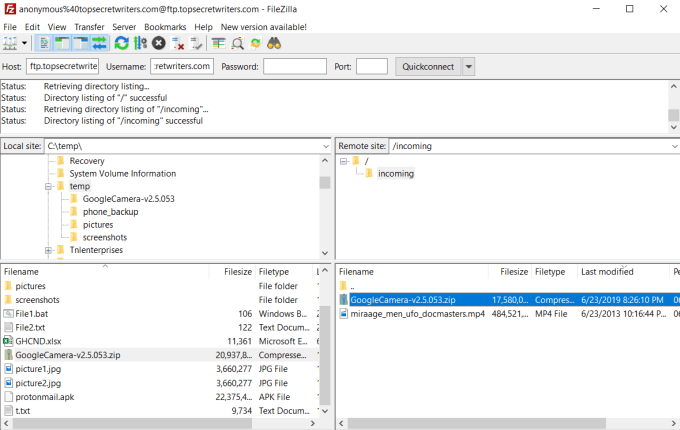File size limits vary depending on the email service. For example, Gmail, Yahoo, and AOL have a limit of 25 Mb per email. Outlook.com is limited to only 10 Mb. Even desktop email clients have limits. Microsoft Outlook only allows a file send of 20 Mb, and while Mozilla Thunderbird is unlimited, you may still experience file size limits depending on what email accounts you connect it to. The trick is to either shrink the file sizes using various utilities or bypass email itself as the primary method for sending the files.
Compressing Files
If the file you’re trying to send is just above the limit (for example, a 30 Mb file on Gmail), you may be able to compress the file to just under the limit. Right-click the file, select Send to, and then select Compressed (zipped) folder. Most files, once compressed into a ZIP file, will reduce in size from anything like 10 to 75%, depending how much available space there is within the file data for the compression algorithm to do its magic. Read our other post that goes into detail on which compression program is best. If the compression routine was able to shrink the file below the size limits of your email service, you can attach the file to your email. Also, be sure to read about the different types of compression formats. Also, check out our video on YouTube where we cover how to ZIP a file and make it smaller:
Splitting Apart Archives
If you are trying to send one large archive file that contains a lot of files and folders, you can always break that file up into smaller archives that are each under the email service size limit. For example, take a ZIP file that’s just under 60 Mb. You won’t be able to send this file using Gmail or any other cloud email service. Right click the file and extract all the files inside it into their individual files and folders by selecting Extract All. Next, create a new archive file by right-clicking inside the folder, selecting New and Compressed (zipped) Folder. Next, copy all the individual files and folders you just extracted from the oversized archive file. Then right-click the new, empty archive file, and select Paste. Repeat this process for as many files and individual folders as you can until the size of the new archive file you created is just under the size limit. Repeat the process above to create another empty archive and continue copying more files and folders until each of those files is just under the limit. Create as many archive files as you need to in order to recompress all the files and folders from the original, oversized archive file. Finally, you can send each of these files as individual emails, until you’re done sending them all.
Send Files via Google Drive
Another approach is uploading the oversized file to a cloud share account like Google Drive, assigning rights for anyone with the link to view it (which is default), and sending the recipient the link to the file on Google Drive. To do this, upload the oversized file to a folder in your Google Drive account. Right-click on the file in Google Drive, and select Share. In the Share with others window, next to Anyone with the link can view, select Copy link. This will copy the Google Drive file URL to your clipboard. Go back to your Gmail email message and select the insert link icon. Paste the Google Drive file link into the Web address field. Select OK to finish. This will insert the link into your email message. Select Send to finish. All the recipient needs to do is click the link to download the file from your shared Google Drive file. Using this approach, it doesn’t matter how large the file is. You can send any file of any size in this manner.
Use Gmail Google Drive Integration
An even faster way you can upload a large file and send the link is by using the integration that exists between Gmail and Google Drive. If these are two services you use and you’re sending your email using Gmail, all you need to do is attempt to attach a file that’s larger than the 25 Mb. Gmail will automatically upload the file to your Google Drive account with visibility for the email recipient. You’ll see a message notifying you of this. When the upload is done, you’ll see the Google Drive link inserted into your email. That’s all there is to it. This is the fastest way to send an oversized file via email, but again you need to have both a Gmail and a Google Drive account for it to work.
Send Directly from Cloud
Another quick way to send an oversized email is by sending it from your cloud share account rather than from the email service itself. For example, from your OneDrive account, you can right-click any file and select Share. This will open a Send Link window where you can type in the recipient’s email address and the email message you’d like to include. Select Send to send the email with the link to the shared file automatically inserted. This is a much faster way to send oversized files, and you don’t have to worry about splitting it up into smaller files or somehow shrinking it to under the limit.
Use Your Hosting Anonymous FTP
If you have your own web hosting account, you can use the anonymous FTP feature that’s usually included with these accounts. Check with your web hosting provider if you’re not sure if you have this feature enabled. If it is enabled, when you’re logged into cPanel, just visit the FTP section and look for the username of the anonymous account. Select Configure FTP Client to see the server name that your email recipient can use to make the FTP connection. All you need to do is use your own FTP client to upload your oversized files to the anonymous FTP folder inside your web hosting account. The folder for this is usually called something like public_ftp. After you send the FTP details to your recipient, they can use their own FTP client to connect to the anonymous folder and download the file from the public_ftp folder. This is an approach you may need to use for very large files, such as very large video files that are many gigabytes in size. The file transfer may take a while, but this is the kind of file transfer that FTP technology was intended for.
Transferring
Large Files via Email
As you can see, there are many ways to transfer very large files via email. The method that you choose really depends upon what services you have available, and the size of the file itself. The archive approach is great if your files are just over the limit. But if you’re dealing with very large files that you can’t split up into smaller archives, then the cloud share method or the FTP approach may be your best option.

